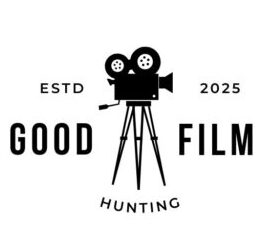A Visual Poetry in Animation
Some films don’t just tell a story—they paint a moving canvas, immersing the audience in a world so beautifully crafted that every frame feels like a piece of art. This is exactly what Flow achieves, an animated marvel that redefines storytelling through visual poetry. It’s a film that doesn’t rely on dialogue or traditional narrative structures, yet speaks volumes through its breathtaking animation and deeply emotional journey.
A Visual Poetry
From the very first frame, Flow establishes itself as a mesmerizing experience. The film’s stunning landscapes, intricate character movements, and seamless transitions create a sense of poetic rhythm that feels almost meditative. Every shot is meticulously designed, making the world feel rich, immersive, and deeply emotional. The visual storytelling alone is enough to communicate the depth of emotions—whether it’s the loneliness of a character, the beauty of companionship, or the bittersweet nature of survival.
Realism in Animation: Animals That Don’t Talk
Unlike conventional animated films that anthropomorphize animals by giving them human-like speech and expressions, Flow takes a more grounded approach. The animals behave as they would in nature—communicating through gestures, body language, and the subtlest of expressions. This lack of dialogue does not hinder the emotional impact; rather, it enhances it, making the journey feel more raw and authentic. This realism in animation strengthens the audience’s connection to the characters, allowing us to interpret their emotions in a way that feels instinctive rather than spoon-fed.
An Incredible Feat: Entirely Made in Blender
One of the most astonishing aspects of Flow is that it was created entirely using Blender, an open-source 3D software. The sheer level of detail, the fluidity of movement, and the breathtaking environments are proof of how far Blender has come as a tool for professional-grade animation. It’s an inspiring achievement, showcasing how independent animators and smaller studios can compete with industry giants. The film’s technical excellence is a testament to both the creators’ skill and the potential of open-source software in the animation industry.
A Sweet and Touching Story
Beyond its technical brilliance, Flow also delivers a simple yet deeply moving narrative. At its core, it’s a story of survival, companionship, and resilience. The emotional beats are carefully woven into the film’s fabric, making every moment feel heartfelt and genuine. The absence of dialogue doesn’t diminish the emotional weight; in fact, it strengthens it, allowing viewers to connect with the characters in a more intimate way. The film beautifully explores themes of trust, loss, and the instinctual need for connection, leaving a lasting impact long after the credits roll.
Apt Direction That Elevates the Experience
Direction plays a crucial role in a film that relies so heavily on visual storytelling, and Flow is a masterclass in this regard. Every movement, every pause, and every frame is deliberate, creating an immersive and emotionally engaging experience. The pacing is perfect—never too rushed, yet never dragging. The director understands when to linger on a moment, when to build tension, and when to release it, making the film feel effortless in its execution.
Final Thoughts
Flow is more than just an animated film—it’s a breathtaking work of art. With its stunning visuals, realistic animal behavior, and a heartwarming story, it stands out as a testament to the power of visual storytelling. The fact that it was made entirely in Blender only adds to its significance, proving that great animation doesn’t always require massive budgets but rather a passionate vision and impeccable craftsmanship. For those who appreciate animation as an art form, Flow is an unmissable experience.

